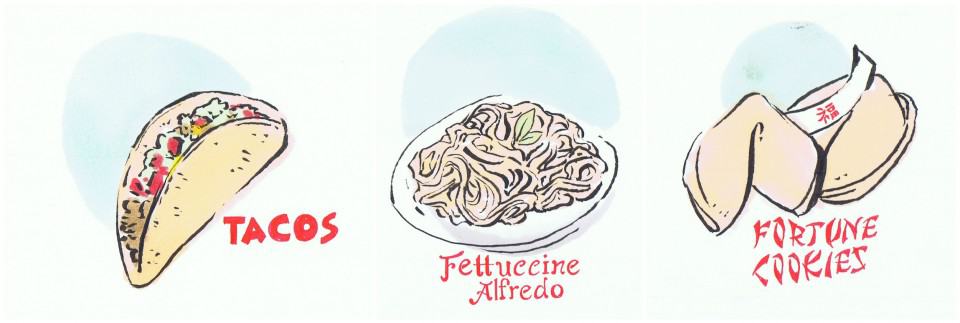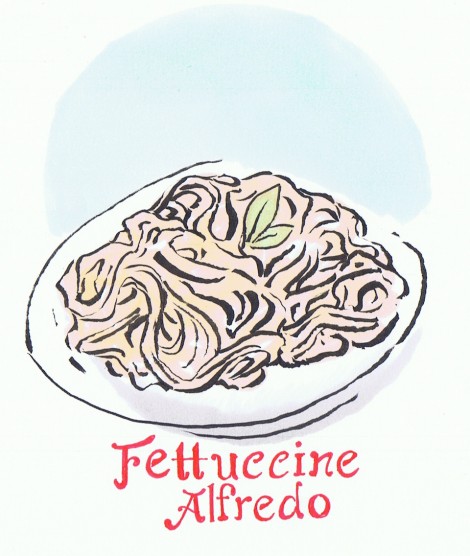Fellow foodies, it’s time we discuss the origins of some of our favourite meals. More specifically, it’s time we discuss the truths about some inauthentic foods despite their perceived countries of origin. Although none of us want to accept the fact that our late-night bites and first choices at restaurants are often an inaccurate portrayal of a country’s traditional cuisine, it’s important to note the true origins of these dishes.
As Torontonians, we often like to think of ourselves as a cultural mosaic. But considering that we’re prone to adapting the cuisines of foreign cultures and popularizing them for our own consumption, this claim is only partially accurate. While many of us know of at least one dish from our own culture that has either been appropriated or fabricated in a North American setting, we will continue to eat the food regardless. Most of us eat out at Mandarin or buy a shawarma from Robarts, assuming that what we’re eating is authentically Chinese or Middle-Eastern.
The tale of the ‘Chinese’ fortune cookie
Let’s start with the most famous of all westernized cuisines: ‘Chinese’ food.
Before the popularity of shawarmas and Chipotle, Chinese food was far-and-away the most popular take-out food around town. Typical dishes involved greasy spring rolls, sweet-and-sour pork, and most importantly, fortune cookies. Without fortune cookies, are you even capable of success and prosperity?
Little did we know, however, that the beloved cookie was actually developed in Kyoto, Japan over a hundred years before it became popular in the United States. Decades after its creation, Japanese bakers migrated to California where they continued to produce the cookies. So how did fortune cookies end up in Chinese restaurants rather then Japanese ones? One theory is that due to rising Japanese internment camps during World War II, American-Japanese bakers found it increasingly difficult to cultivate culinary businesses, and, as a result, Chinese bakers took over the production of fortune cookies.
From that point on, the fortune cookie became a staple in American-Chinese cuisine, and it continues to remain one of the most beloved features of this so-called Chinese food.
The not-so-Mexican taco
Next is the ‘Mexican’ taco. A traditional taco from Mexico consists of a soft corn tortilla, steak or pork, cilantro, a squeeze of lime, and a garnish of red onion. The taco many of us have grown accustomed to, however, is a hard, yellow taco shell filled with various processed foods, such as hamburger meat, iceberg lettuce, and fake cheese.
This version of a taco has American origins in states bordering Mexico, like Texas and Arizona. Jeffery M. Pilcher — a professor from the University of Minnesota investigating the evolution of Mexican food — told the Smithsonian that Mexicans immigrating to the United States often intended on maintaining their traditional culture but could only do so with the ingredients imported and sold in America.
Yet, the establishment of massive brands such as Old El Paso that specialize in fake-Mexican food have ultimately led to an evolution of the taco that no longer resembles authentic Mexican cuisine.
Fettuccine Alfredo: an ‘Italian’ food for Americans
You’ve probably seen fettuccine alfredo on a menu somewhere like The Olive Garden or The Old Spaghetti Factory.
As it turns out, the popular ‘Italian’ dish is not entirely Italian. In 1914, an Italian man cooking soft-foods for his pregnant wife concocted an early version of fettuccine alfredo, so as not to upset her stomach. The cook, Alex di Lelio, used parmigiano and butter in the dish and later added the recipe to his restaurant’s menu. Eventually, two actors discovered the dish and brought it back to America.
Following its brief stint in Rome, di Lelio moved his restaurant to Rockefeller Center in New York City, where alfredo sauce became popular, and the final changes were cemented. In Italy, however, if you ask for fettuccine alfredo at a restaurant, the waiters will likely have no idea what you’re talking about.





